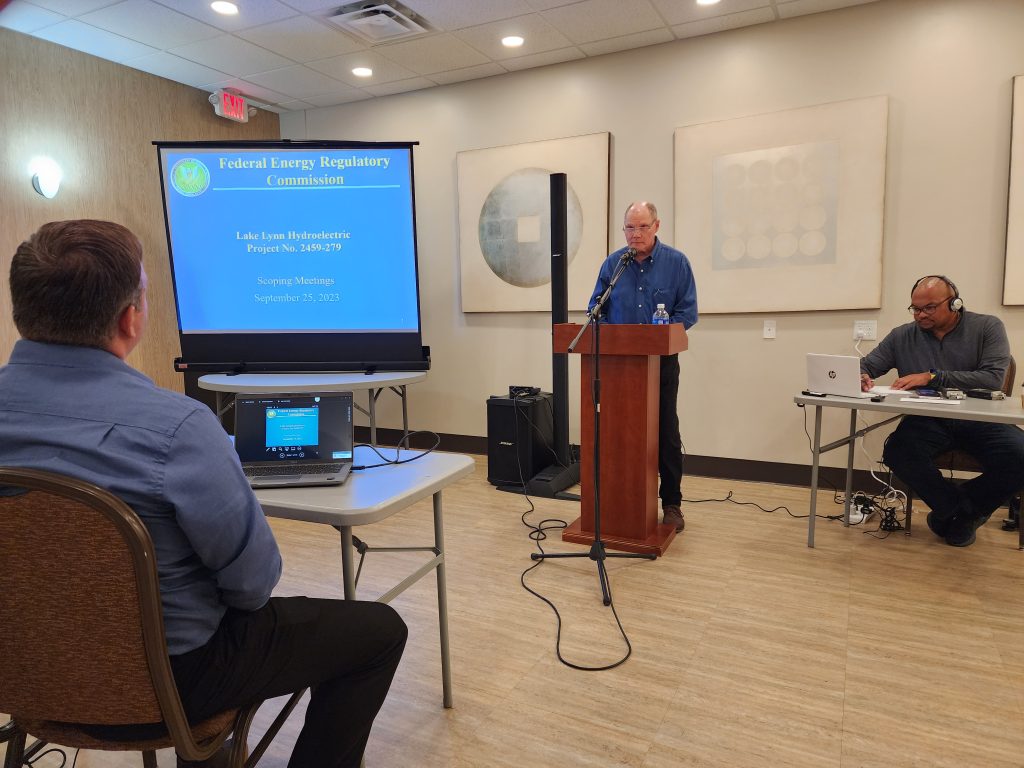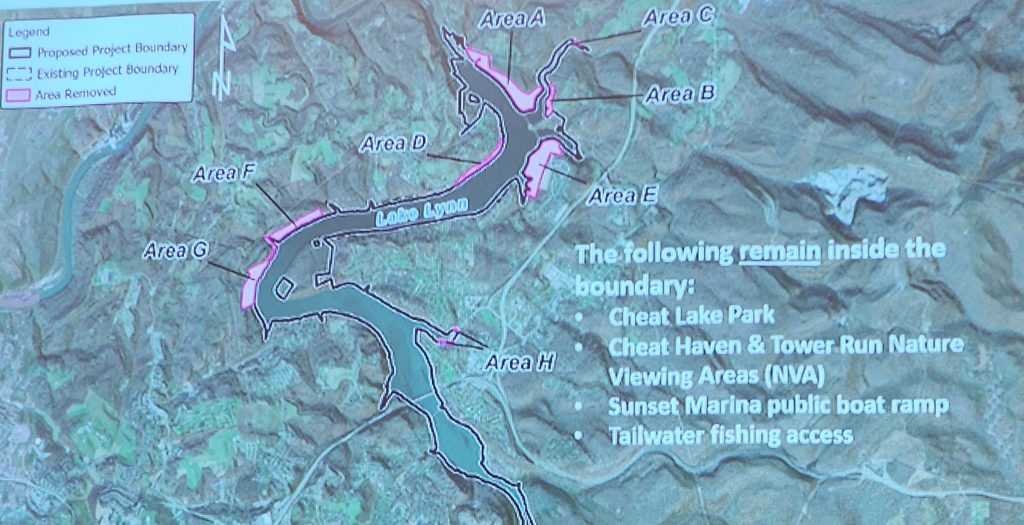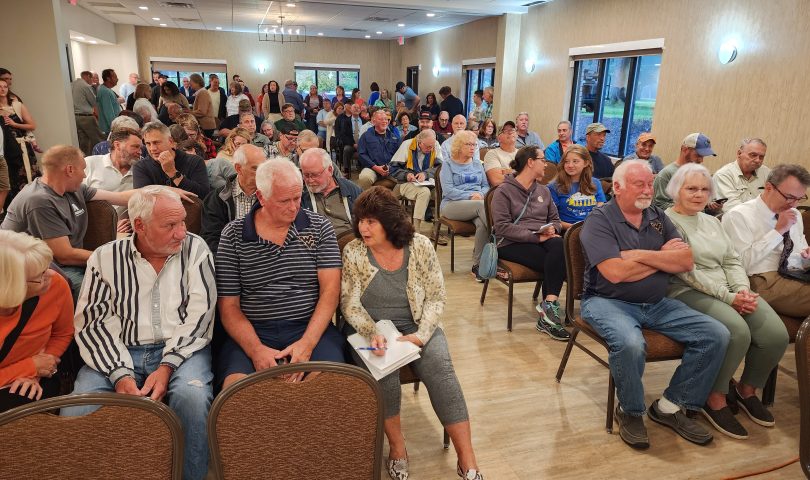MORGANTOWN – About 150 people turned out Monday evening to voice their concerns about a proposal to remove 307 acres surrounding Cheat Lake from federal protection – as the Federal Eenrgy Regulatory Commission reviews Lake Lynn Generation’s application to renew its Lake Lynn Hydroelectric Project license.
Some people were calm. Adam Polinski, said, “I’m still a little up in air about what the long-term fate of those lands are. Seems like they could go up for sale if they leave the hands of FERC.”

Others were angry. Hedy Watson said she spent her childhood at the lake and brings her children there. She’s worried about restricted access and effects on property values. “I’m not going to stand back and watch these lands around this lake … just be twiddled away by somebody who’s going to go back to Virginia, go back to wherever you guys come from. You guys aren’t going to be here.”
Jody Smet, chief compliance officer and vice president of regulatory affairs for property owner Lake Lynn Generation and its parent company Eagle Creek Renewable Energy (which is a subsidiary of Ontario Power Generation) explained the project.
Maryland-based Eagle Creek, she said, owns 85 hydro-power stations in 18 states and has been the owner; Lake Lynn Generation has been this project’s licensee and owner since 2015. The current license was issued Dec. 27, 1994, and expires Nov. 30, 2024.
Lake Lynn will make no changes to operations or facilities. Lake Lynn proposes to adjust the project boundary to include only lands necessary for operation and maintenance of the power station, she said.
She said, several times in the face of repeated skepticism, “We will not sell the land.”
The eight non-contiguous areas in the boundary proposal, she said, will allow them to adjust the project boundary to follow the contour line of the high reservoir elevation, 870 feet, and bring all parts of the boundary into the highest contour line. “It’s largely administrative. We need a simple project boundary.”

They are not removing public access areas from FERC protection, she said: Cheat Lake Park, Cheat Haven and Tower Run nature viewing areas, Sunset Marina boat ramp and parking lot, Tailwater fishing access.
The meeting was frequently chaotic, with people shouting out comments and questions out of turn and interrupting people at the microphone.
Doubting Smet’s assertions about the sale of the land, one audience member spoke up, “Once its out of FERC’s hands, you can do whatever you want with it, regardless of what you say here tonight.” Another followed him, “It’ll be developed.”
People came to the mic to offer various solutions to keep the 307 acres safe, if FERC would approve the boundary change: donate it, sell it to a land trust organization, turn it into a state park or county park; stipulate before releasing it from FERC protection that it must remain in public hands and not be available for private development.
Project timeline
FERC Project Coordinator Allan Creamer presided over the meeting – variously understanding, amused or annoyed by the crowd’s sometimes unruly passion – and explained the process.
Lake Lynn Generation filed its license application in November 2022, he said. FERC accepted the application in June, after various revisions. FERC held two “scoping meetings,” meaning information gathering sessions on Monday. An afternoon meeting focused on the concerns of resource agencies, Native American Tribes and non-governmental organizations. The evening meeting, which ran past two hours, was for public information and comment.
Those two meetings were followed by a Tuesday morning environmental site review, which the public was welcome to attend.
FERC staff must review the scoping meeting comments by Oct. 25, and then prepare for a thorough environmental review for a National Energy Policy Act report, which will be subject to comments. FERC will then issue a licensing decision, and parties with intervenor status will have 30 days to request a rehearing.
Among the protection, mitigation and enhancement measures, Lake Lynn Generation must develop a shoreline management plan and a historic properties management plan.
FERC will review such things at the effects of shoreline development on erosion and sedimentation.
And, concerning the proposed boundary change, FERC will review the possible effects of removing the land from federal protection on such things as aquatic life, endangered species recreation opportunities, archaelogical sites and cultural resources.
FERC is accepting written comments through Oct. 25, and they can be submitted at ferconlinesupport@ferc.gov, identifying Lake Lynn Project 2459-279.
Creamer said every comment will be reviewed.
Email: dbeard@dominionpost.com




